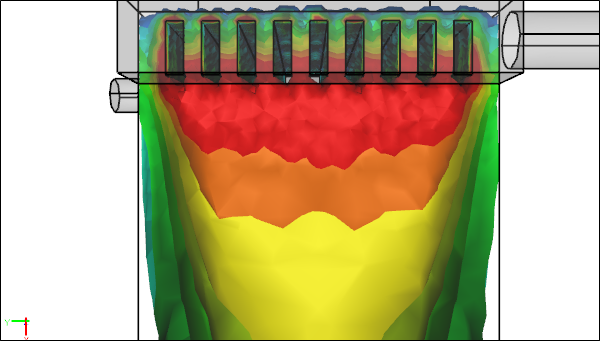
May 2019: New Caedium Release and Tutorials
It is finally time to announce the new release of Caedium v6.0, headlined with the addition of Conjugate Heat Transfer (CHT) and Passive Species Transport. I know it has been a while, but some things take time and are the worth the wait - I hope this release is one of those things. In support of the new features are two new tutorials to get you started with CHT.
 Conjugate Heat Transfer Through a Water-Air Radiator
Conjugate Heat Transfer Through a Water-Air Radiator
Simulation shows air temperature iso-surfaces
Enhanced CFD Simulations with Conjugate Heat Transfer and Passive Species Transport
The highlight of the latest Caedium (v6.0) release is an enhanced Computational Fluid Dynamics (CFD) heat transfer capability with multi-domain support for fluids and solids, known as Conjugate Heat Transfer. Also Caedium can now simulate the dispersal of secondary species (e.g., smoke or dye) in a primary fluid, known as passive species (or scalar) transport. Read more >>
New Tutorials
Heat Sink
Create a symmetrical multi-volume domain for a Conjugate Heat Transfer simulation of a heat sink. In this tutorial, you will learn how to:
- Create a coupled multi-volume domain
- Create multiple boxes
- Translate objects
- Subtract volumes
- Decompose volumes
- Link faces
Conjugate Heat Transfer for a Heat Sink
Simulate an incompressible, steady-state, turbulent air flow around a heat sink with Conjugate Heat Transfer. View velocity vectors and monitor average temperatures. In this tutorial, you will learn how to:
- Specify fluid and solid conditions on a multiple-volume simulation for an incompressible, steady-state, turbulent air flow simulation using Conjugate Heat Transfer
- Specify boundary conditions on faces
- Specify meshing parameters
- Generate velocity vectors
- Create an area-averaged temperature monitor
- Monitor residuals to determine flow simulation convergence
